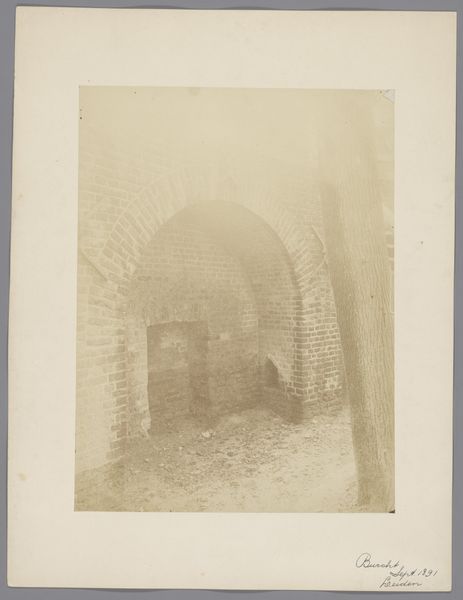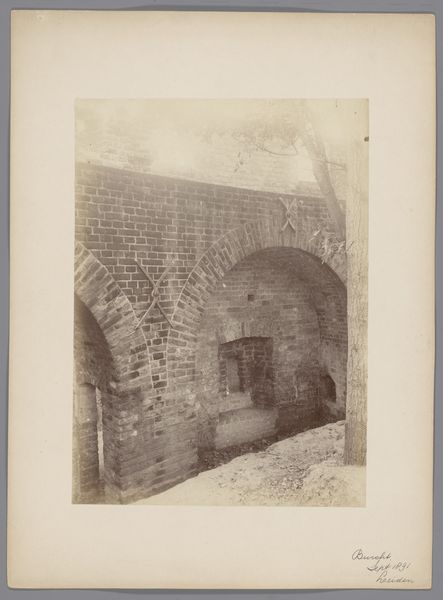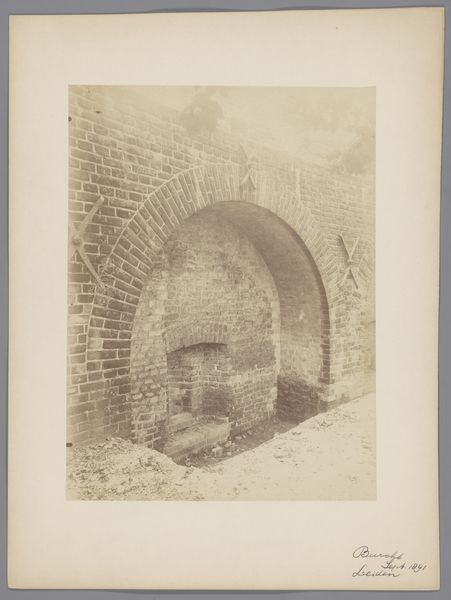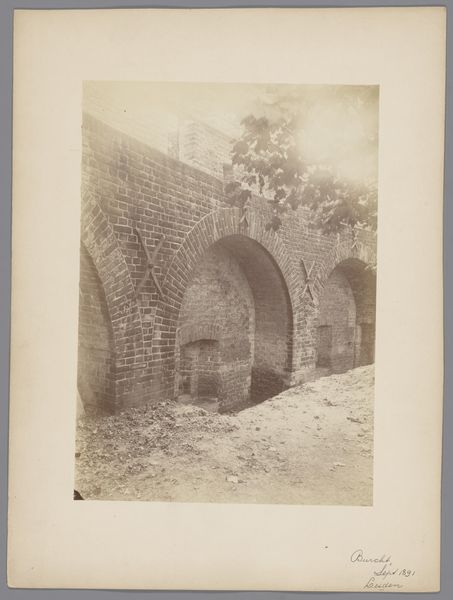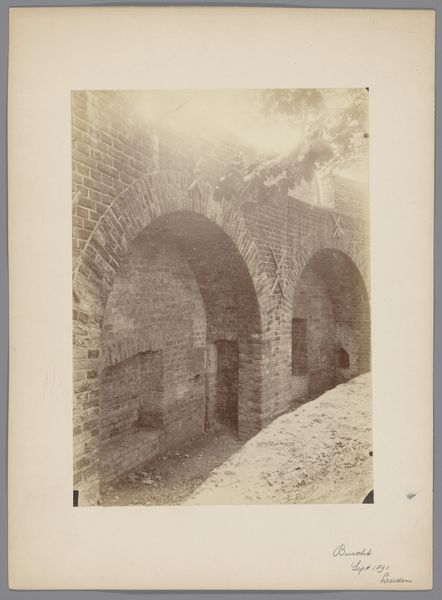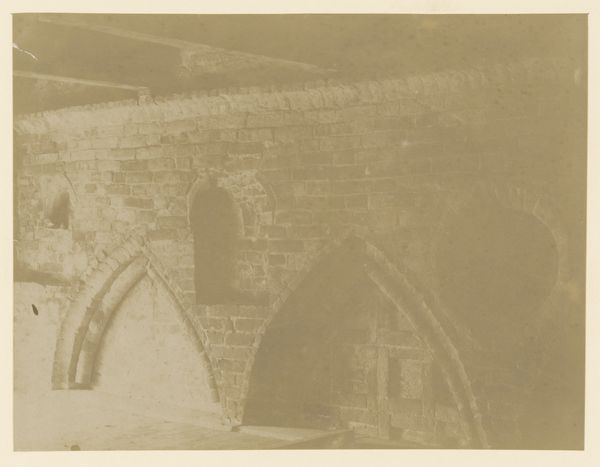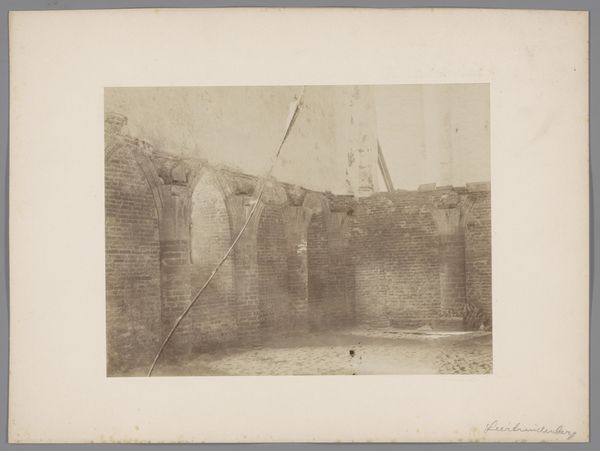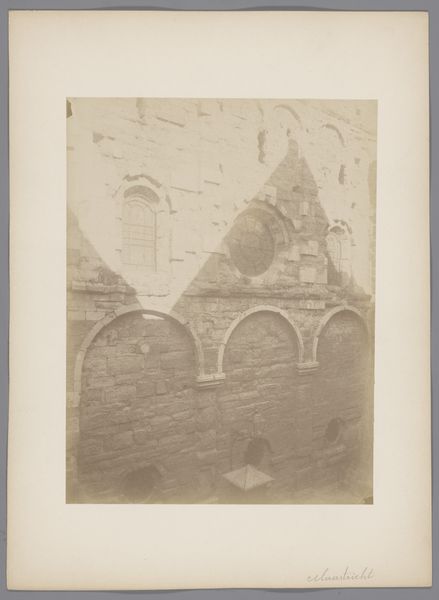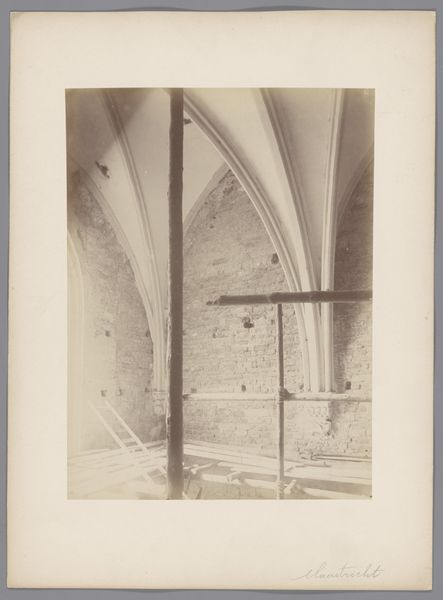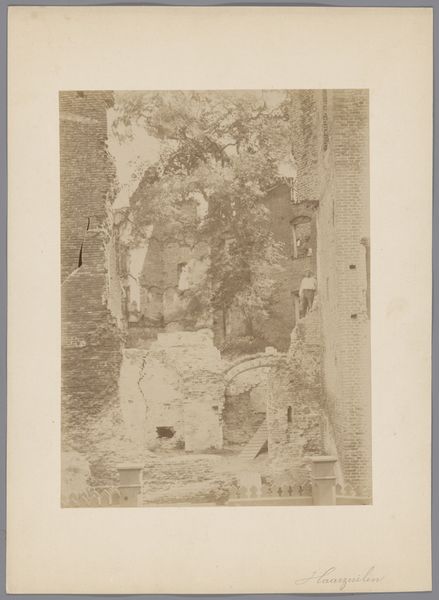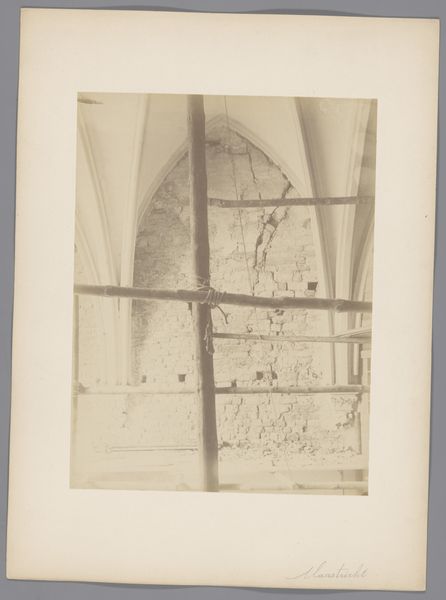
Dimensions: height 230 mm, width 173 mm
Copyright: Rijks Museum: Open Domain
Editor: Here we have "Schietgat van de Burcht van Leiden," taken in 1891 by an anonymous photographer. It's a sepia-toned image of a brick structure, giving off this enclosed and almost melancholic vibe. What are your thoughts on it? Curator: It resonates with the feeling of memory embedded within architecture. A 'schietgat,' or shooting gallery, whispers of defense, of protection, but also confinement. The light seeping through that single window, a modern insertion, clashes and yet speaks to enduring purpose. What feelings does this pose for you? Editor: I hadn’t considered the conflict in the modern window placement. I initially viewed it as a kind of solemn observation point. Does the very medium, the photographic image itself, play a role in the symbolism? Curator: Absolutely! Photography, particularly in the late 19th century, was heavily associated with documentation and preservation. Think about what this image meant to people back then - what stories did those bricks, that structure, tell about their heritage? The bricks, the light, shadows–these aren't simply materials and form. Editor: That makes me think of old family photos - objects filled with generational narratives. The layers are pretty intricate! Curator: Indeed! Images function like collective memories, carrying a continuity of symbolic meaning that photography, at that time, was entrusted to deliver. The weight of its past becomes embedded, waiting for us to rediscover. Editor: It really makes you appreciate how a simple structure can be loaded with such historical depth. Thanks! Curator: My pleasure. Understanding art requires an appreciation for those layered visual memories.
Comments
No comments
Be the first to comment and join the conversation on the ultimate creative platform.
